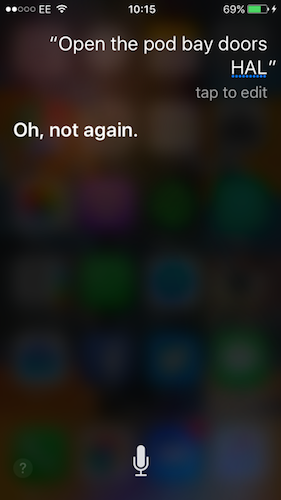It’s search Jim, but not as we know it.
The dream of an ultimate personal assistant isn’t a farfetched sci-fi fantasy like the interactive computing systems in Star Trek. It’s technology available today already being applied to search engines.

Leading visionaries in search technology, including Google’s Beshad Behzadi in his keynote speech at the SMX West Keynote to Satya Nadella at Microsoft’s Build conference, are articulating a vision of smarter and more capable personalized help that will drive efficiency, focus and ultimately, happiness.
Nadella believes the next big bet for Microsoft is “conversation as a platform.” This is a more intuitive and accessible canvass integrating into apps, as well as artificial intelligence (A.I.) and bots that can interact with other bots. While the devices and technology used to access search are evolving, search will still be an increasingly integral part of everyday life.
Understanding intent through voice search
Today’s digital assistants like Microsoft’s Cortana, Apple’s Siri and Google Now are voice-search enabled and growing smarter with every interaction. According to comScore, 50% of all searches will be voice searches by 2020.
Since voice search is more conversational and uses natural language, the A.I. is evolving to understand user intent and context based on the previous search queries, multiple step queries and user behavior.

Words can provide invaluable substance to A.I. technology during the search process. For marketers, the longer query strings from voice search as compared to text provide richer user intent data. While a text query would typically be one to three words, a spoken query is often three or more.
For example, on my desktop I would search for “blue t-shirt.” But when it comes to a voice query, I might ask, “Hey Cortana, where can I find a cool blue t-shirt?” The conversational tone provides a signal of intent to purchase, style preference and desired shopping locations if I granted access to my location. It permits marketers to:
- Build user-intent models to understand where the user is in the customer journey.
- Match advertising campaigns (messaging and landing pages) to the right stage of user intent.
- Develop site content with a conversational tone, providing specific answers to users’ needs and top questions. Voice searchers are looking for quick answers. Content answering specific questions will make your site a go-to resource.
AI, the ‘Added Ingredient’ for enhanced consumer experience and engagement
Technology giants like Microsoft, IBM and Google are focusing on new ways machine-based learning, A.I. and bots can analyze data. Personal assistants like Cortana, powered by Bing search intelligence, can request permission to gather data from email accounts, calendars, social networks, geo-locations and mobile apps to start learning about behaviors and preferences.
The A.I. engine analyzes the information to make recommendations before they have a chance to ask a question. The more interactions a user has with their assistant, the more accurate the predictive models can be – and the more her serendipitous proposals will delight us and make life easier.




